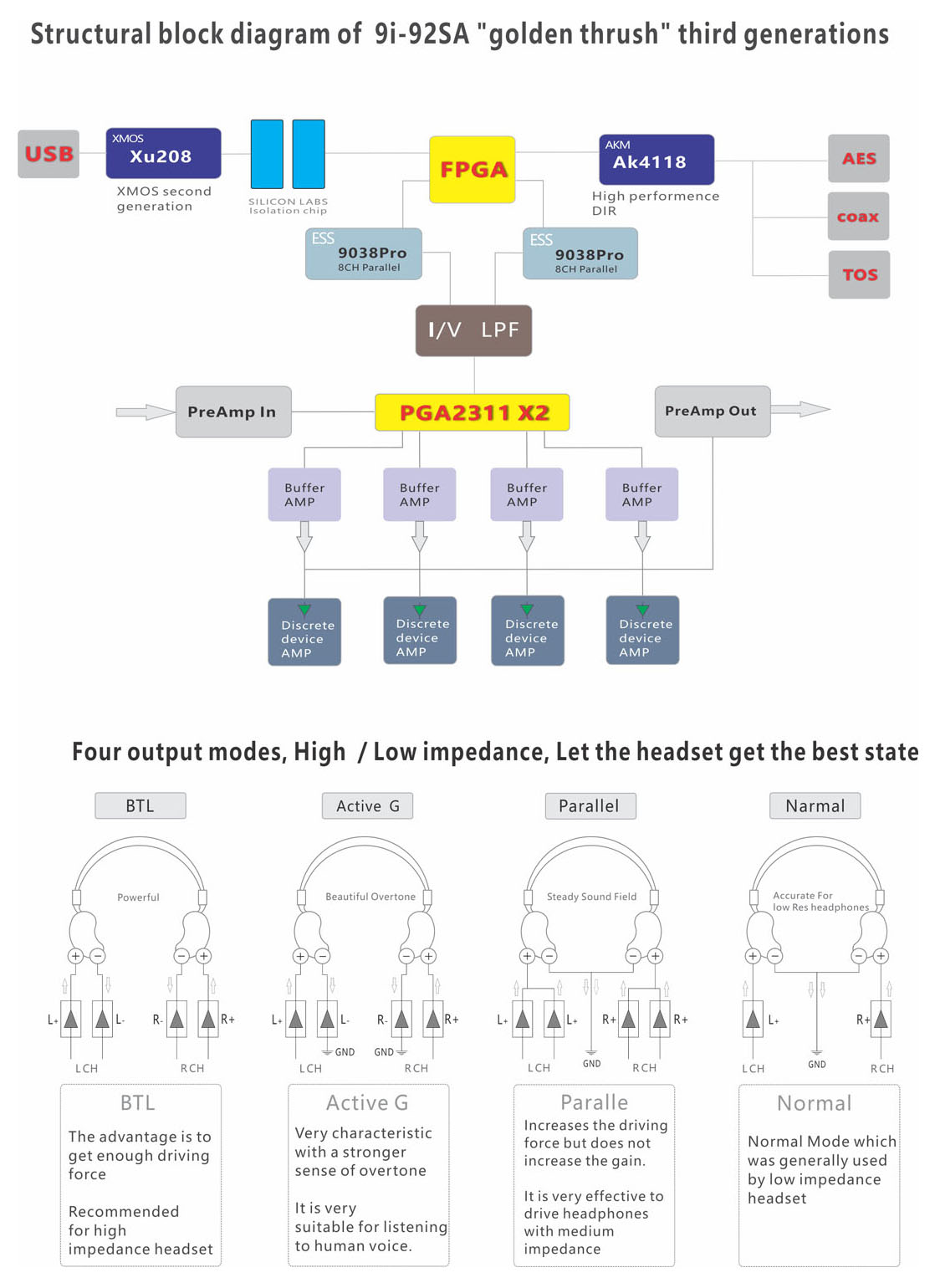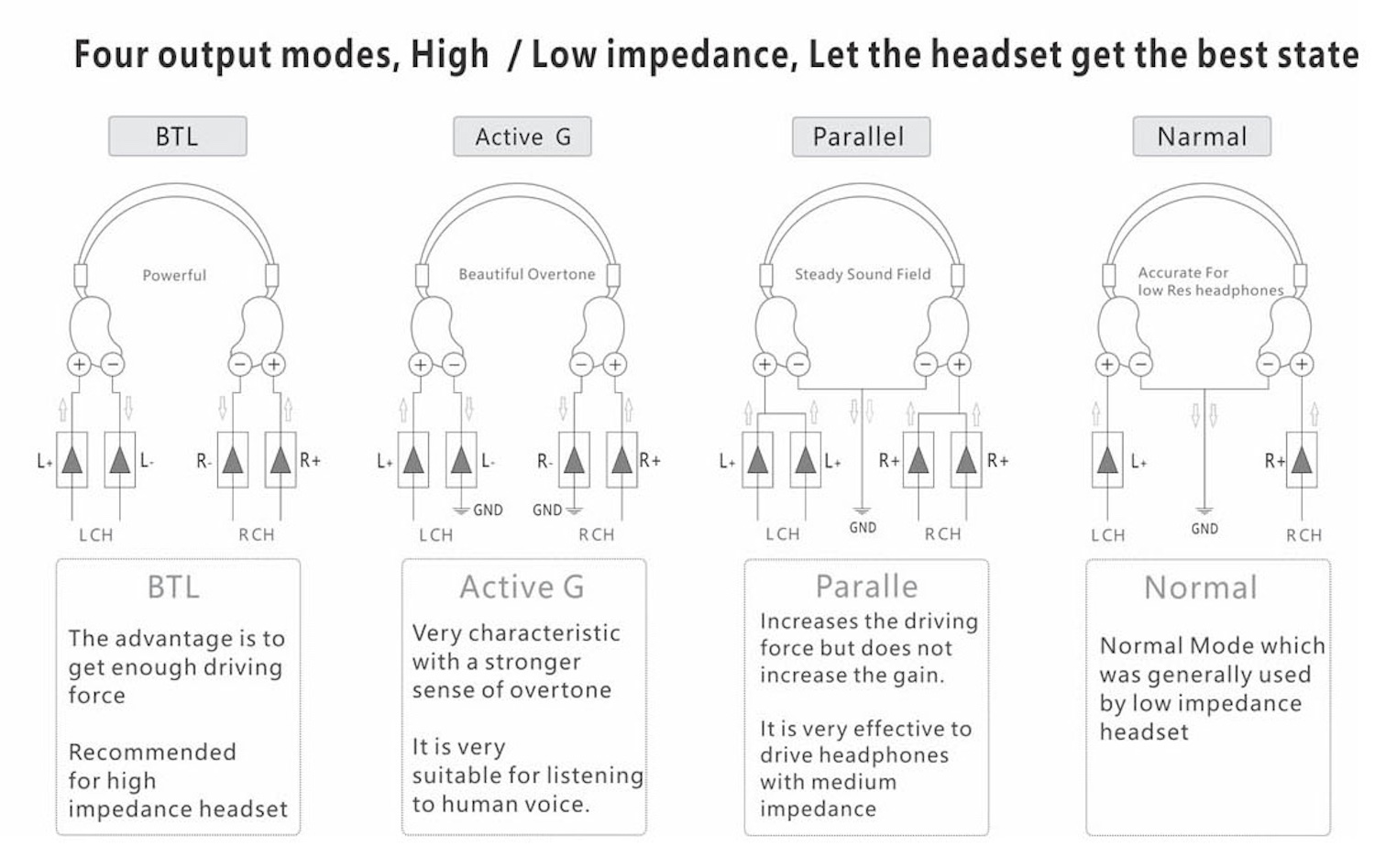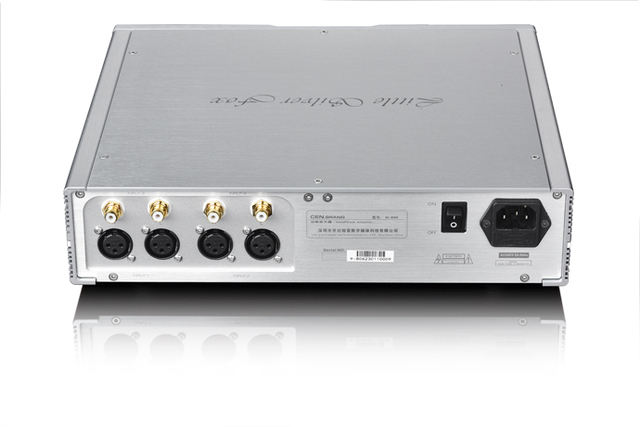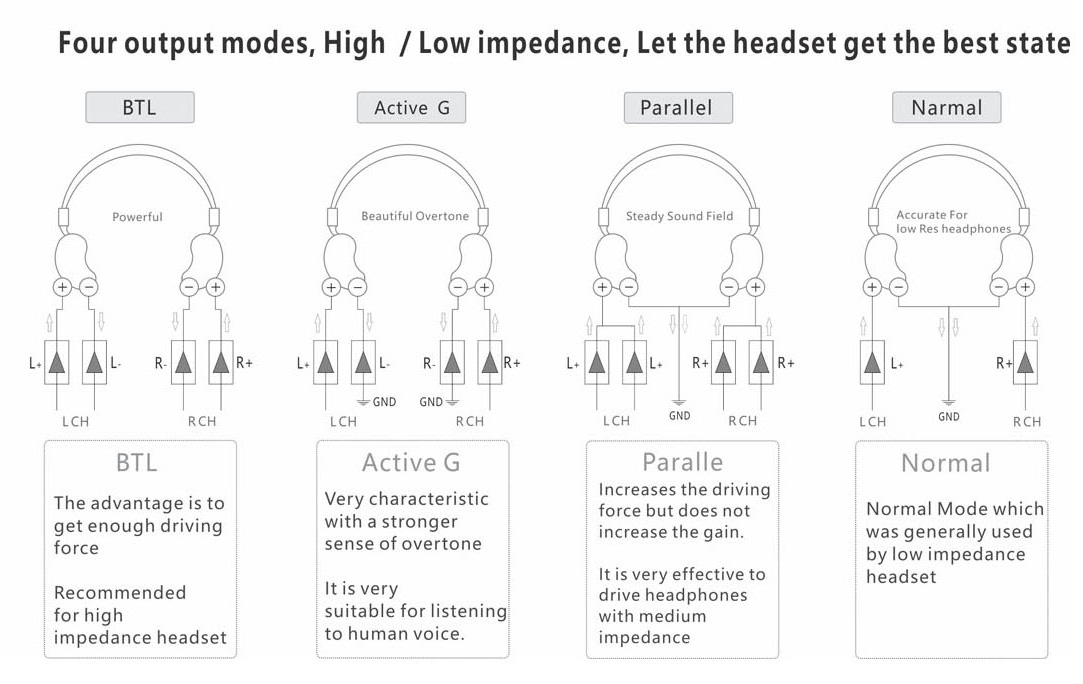CEN.GRAND 9i-92SA III DAC/HEADPHONE AMP/PRE AMP
9i-92SA III “Golden Thrush” DAC / headphone amplifier / preamplifier is a desktop hifi product for headphone user. A variety of advanced technologies and solutions such as USB isolation technology were integrated , such as ESS 9038Pro DAC chip work in eight channel parallel connection, etc.. The audio quality especially headphone amplifier performance is excellent. It will get good effect in driving the mainstream headphones such as HD800S and T1-II.
-
“Golden Thrush” has many functions and performs well on the adaptability of the headphones. There are not only four types of output mode for adapting many kinds of headphones but also different output circuits for high and low impedance headphones. As a headphone hifi product, “Golden Thrush” is good at both performance and function.
-
The 9i-92SA “Golden Thrush” consists of the following parts:
- 1: USB interface. XMOS second generation XU208 + FPGA digital processing module , isolation technology is used to isolate noise from the computer. Support for NativeDSD512 and PCM384 input.
- 2: AK4118+ dual ESS 9038Pro DAC chip. The SPDIF receiver has three interfaces: coaxial, optical, and AES, support PCM 24bit/192KHz and DOP (DSD64) inputs.
- 3: Headphone amplifier. It has 6.35 unbalanced interface and 4-pin XLR balanced interface. It has four output mode: Normal, BTL, Active Ground and Parallel.
- 4: Pre-Amp consisting of discrete components. “Golden Thrush” can be used as a pre-amp, the input interface is RCA and XLR, with infrared remote control.
- 5: Power supply and display system.

-
Two ESS 9038Pro DAC chip are used and one for each channel. There are 8 internal DAC in each 9038Pro chip. Most of DAC which used 9038Pro chip only use one or two of them. The others are idle. The mode of multiple DAC channel parallel has many advantages but it is not easy to get good sound and heating is serious. The 9i-92SA III is different. With careful design and adjustment, the structure of 8 internal DAC parallel is one of important reason of good sound.
-
There are 4 modes of connecting to headphone . Each mode has its own characteristics, and the difference is very obvious. This funtion is very useful for user , because he can chooses the most suitable mode for his headphone. Under normal conditions high-impedance and high-quality headphones are suitable for Blanced(BTL) mode, in this mode the headphones can fully be driven by Amp. When your headphones are easier to be driven , you can choose parallel or Active G mode to drive them, as well as Normal mode. Here, I would like to introduce what is the “virtual ground(Active G)” mode.
-
Usually the positive terminal of the headphone cable should be connected to the positive output, and the negative terminal should be connected to the GND. If we make the input terminal of amplifier to GND, its output will get 0 level, which is the same level as GND. At this time if the negative terminal of the headphone is connected to this 0 level , it is equal to connecte GND. But this is not the real GND, only simulated GND, that is to say “virtual GND”(Active Gnd). This kind of connection can get a more unique sound, the listening experience is warmer and softer, more suitable for listening to human voice or string. In short, the “virtual GND”(Active G) mode provides users with an effective tuning method that increases adaptability and entertainment.
-
The second generation of XMOS is the latest XMOS solution which is faster than last. Isolation technology enables blocking between the computer and 9i-92SA. The ground wire is not connected so noise was almost completely isolating from the computer. This feature is very effective because there are a large number of switching power supplies inside the computer that generate a lot of noise which can interfere with the analog circuit , audio performance will be degrade. Isolating these noises can significantly improve the purity of the sound.
CEN.GRAND DSDAC 1.0 (Deluxe Model)
DSD audio coding mode is almost perfect, although it has many technical barriers. The unique charm of DSD sound attracts many people, many music lovers have high enthusiasm for DSD in the past decade. At present more than 10000 SACD music albums have been released in the world which is a valuable music resource for mankind. In order to make it play a greater role, many people are making unremitting efforts and they are one of them.
- Due to the disc storage space being limited, SACD adopts the dsd64 format, which has a lower frequency. The accuracy of dsd64 in DA conversion is low and there is out-of-band noise (noise above 23khz) after the DA process. Therefore, most SACD players must convert dsd64 to PCM before DA conversion. This way weakens the advantages of DSD, and it was an important reason why SACD fails in the competition with CD.
- With the passage of time, more in-depth research on DSD coding technology has made progress. FPGA technology has also made great progress. Therefore, the technology to raise the DSD frequency from 2.8224MHz to a high number has been available. It can make the DA process with higher accuracy after the frequency was raised. At the same time, because the frequency of out-of-band noise is pushed up, it can be easily filtered out. Based on these conditions, they decided to start the research and development of the algorithm for DSD frequency increasing.
- The high-precision frequency rise algorithm is the core of DSDAC1.0. Although there are many ways to produce frequency rising, but the high-precision frequency rise algorithm is a complex mathematical problem, not a digital technical problem. The technology of frequency rising not only makes DSD more widely used but also makes DSDAC1.0 become the leading audio DAC.
- Synchronous direct clock technology: femtosecond clock inside DSDAC1.0 will be sent to the shift register directly without any intermediate conversion so that the performance of the femtosecond clock is directly reflected in the analogue output. This technology is different from the use of an external femtosecond clock and a built-in femtosecond crystal oscillator. The use of an external clock and built-in crystal oscillator can only be a source clock, it must be divided by a frequency divider. In this way, there are large additive jitters, which change the femtosecond clock from femtosecond to picosecond. The clock of DSDAC1.0 can be sent to the shift register directly without a frequency divider, it is an advanced technology of clock application.
- Clock blocking: It means that the clock from the pre-devices is abandoned and the DSDAC1.0 only uses the local clock. In this way, the clock of pre-devices such as digital turntable, CD player and digital interface will no longer affect the performance of DAC. As long as the data is correct, there is no difference in any digital source. This technology is a dream of digital audio. Clock blocking is a synchronization process, not the ASRC, which has a great negative impact on sound quality. It solves the clock problem that has plagued the digital audio field for a long time.
- DSDAC1.0 has an advanced USB interface and can receive DSD source code in native mode. As a DSD DAC, receiving DSD source code is a necessary function. DSDAC1.0 has two ways to input DSD source code: one is to input dsd64 via SPDIF in DOP mode, and the other is to input dsd512 via USB in native mode. The XU208 scheme of XMOS inside DSDAC1.0 has a ground isolation function, the interference of the front digital source can be almost isolating. They have customized the special driver from XMOS to enable DSDAC1.0 to receive the source code of dsd512 in native mode.
- The deluxe model can also be used as a Pre-Amp. It can provide a maximum 5db gain for the input signal. In Pre-Amp mode the function of DAC would be terminated.
CEN.GRAND 9i-806 "Little Silver Fox"
9i-806 headphone amplifier is “Little Silver Fox”.
- Both it and the “Silver Fox” are intended to drive monster-sized headsets. Its circuit architecture originates from a large power amplifier. After many redesigns and adjustments, the “Little Silver Fox” has finally become an excellent headphone amplifier. High analytical, high density and neutral without tendency, especially power driving force, make it leader in similar products . Whether high sensitivity or low ,high resistance or low , dynamic earphone or flat panel headset, “Little Silver Fox” can adapts to them by its super driving ability and quality. It can show the characteristics of headphone more than normal headphone amp.
The difference between 9i-806 and 9i-906:
- 1: 9i-806 uses potentiometer for volume contrl and 9i-906 uses Volume IC Muse72320+ OP Muse02
- 2: 9i-806 use a smaller transformer than 9i-906.
- 3: 9i-806 use some cheaper components than 9i-906.
- 9i-806 “Little Silver Fox” is a headphone power amplifier with high performance, strong power supply and high current output. It’s circuit design is complex and perfect , 4 pairs of high-power British FET are used in output part , the output power is 30Ω/15W.
- Power: 15W (30 Ω BTL, distortion 0.02%)
- Frequency response: 20-20KHz (0.2db)
- Net Weight: 6.9kg
- GRoss Weight: 8.1kg
- Ultra low sensitivity headphones can also be driven with excellent audio performance.
- It has four output modes: Normal, Balanced(BTL), Virtual Ground(Active G) and Parallel, as well as three low resistance modes and one high resistance mode. A variety of headphones can be matched .

- It has two balanced and two unbalanced inputs . Even if you input an unbalanced signal, the internal circuit will convert it into balanced signal . Therefore, even if you input an unbalanced signal you will also get the maximum output power.
- For the best sound quality, a balanced input is highly recommended unless you only have unbalance signal. “Little Silver fox” has four output interfaces: 4 pin XLR balanced, 6.35 single X2 , 4.4 balanced as well as double 3 pin XLR balanced .
Performance parameters:

CEN.GRAND 9i-906 "Silver Fox"
9i-906 “silver fox” is a headphone power amplifier with high performance, strong power supply and high current output. Its circuit design is complex and perfect , 4 pairs of high-power British FET are used in output part , the output power is 30Ω/20W. Ultra low sensitivity headphones can also be driven with excellent audio performance.
- 9i-906 “Silver Fox” has four output modes: Normal, Balanced(BTL), Virtual Ground(Active G) and Parallel, as well as three low resistance modes and one high resistance mode. A variety of headphones can be matched.

Two balanced and two unbalanced inputs were installed on the unit back panel. Even if an unbalanced signal is input the internal circuit will convert it into balanced signal . Therefore, you will also get the maximum output power even if you input an unbalanced signal.
- For the best sound quality, a balanced input is highly recommended unless you only have unbalance signal. “Silver fox” has four output interfaces: 4 pin XLR balanced, 6.35 single , 4.4 balanced as well as double 3 pin XLR balanced.
Performance parameters:
- Power: 20W (30 Ω BTL, distortion 0.02%)
- Frequency response : 20-20KHz (0.2db)
- Dimensions : 430mm X 100mm X 360mm
- Net Weight : 12kg
- GRoss Weight : 13.7kg

© 2024 Tutti i diritti riservati.